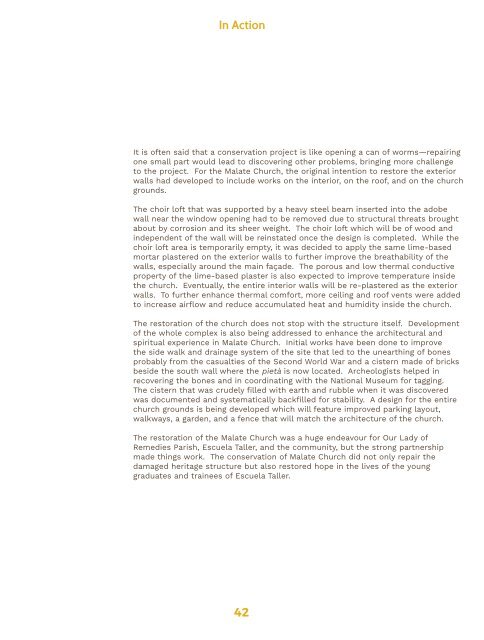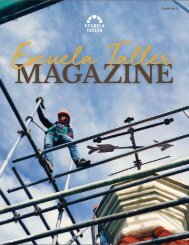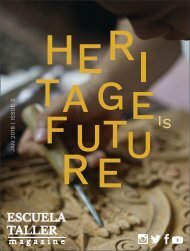Escuela Taller Magazine - Issue 1
Escuela Taller Magazine is the official magazine of Escuela Taller de Filipinas Foundation Inc. (ETFFI). Escuela Taller is a training center situated in Intramuros, the historical walled city of Manila, whose main objective is to equip the youth with knowledge and specialized skills to help them uplift their economic status while focusing on the preservation of heritage structures. Our trainees are the protectors of the Philippine built heritage.
Escuela Taller Magazine is the official magazine of Escuela Taller de Filipinas Foundation Inc. (ETFFI).
Escuela Taller is a training center situated in Intramuros, the historical walled city of Manila, whose main objective is to equip the youth with knowledge and specialized skills to help them uplift their economic status while focusing on the preservation of heritage structures. Our trainees are the protectors of the Philippine built heritage.
Create successful ePaper yourself
Turn your PDF publications into a flip-book with our unique Google optimized e-Paper software.
In Action<br />
Section<br />
The main façade<br />
after conservation.<br />
It is often said that a conservation project is like opening a can of worms—repairing<br />
one small part would lead to discovering other problems, bringing more challenge<br />
to the project. For the Malate Church, the original intention to restore the exterior<br />
walls had developed to include works on the interior, on the roof, and on the church<br />
grounds.<br />
The choir loft that was supported by a heavy steel beam inserted into the adobe<br />
wall near the window opening had to be removed due to structural threats brought<br />
about by corrosion and its sheer weight. The choir loft which will be of wood and<br />
independent of the wall will be reinstated once the design is completed. While the<br />
choir loft area is temporarily empty, it was decided to apply the same lime-based<br />
mortar plastered on the exterior walls to further improve the breathability of the<br />
walls, especially around the main façade. The porous and low thermal conductive<br />
property of the lime-based plaster is also expected to improve temperature inside<br />
the church. Eventually, the entire interior walls will be re-plastered as the exterior<br />
walls. To further enhance thermal comfort, more ceiling and roof vents were added<br />
to increase airflow and reduce accumulated heat and humidity inside the church.<br />
The restoration of the church does not stop with the structure itself. Development<br />
of the whole complex is also being addressed to enhance the architectural and<br />
spiritual experience in Malate Church. Initial works have been done to improve<br />
the side walk and drainage system of the site that led to the unearthing of bones<br />
probably from the casualties of the Second World War and a cistern made of bricks<br />
beside the south wall where the pietà is now located. Archeologists helped in<br />
recovering the bones and in coordinating with the National Museum for tagging.<br />
The cistern that was crudely filled with earth and rubble when it was discovered<br />
was documented and systematically backfilled for stability. A design for the entire<br />
church grounds is being developed which will feature improved parking layout,<br />
walkways, a garden, and a fence that will match the architecture of the church.<br />
The restoration of the Malate Church was a huge endeavour for Our Lady of<br />
Remedies Parish, <strong>Escuela</strong> <strong>Taller</strong>, and the community, but the strong partnership<br />
made things work. The conservation of Malate Church did not only repair the<br />
damaged heritage structure but also restored hope in the lives of the young<br />
graduates and trainees of <strong>Escuela</strong> <strong>Taller</strong>.<br />
42 43





